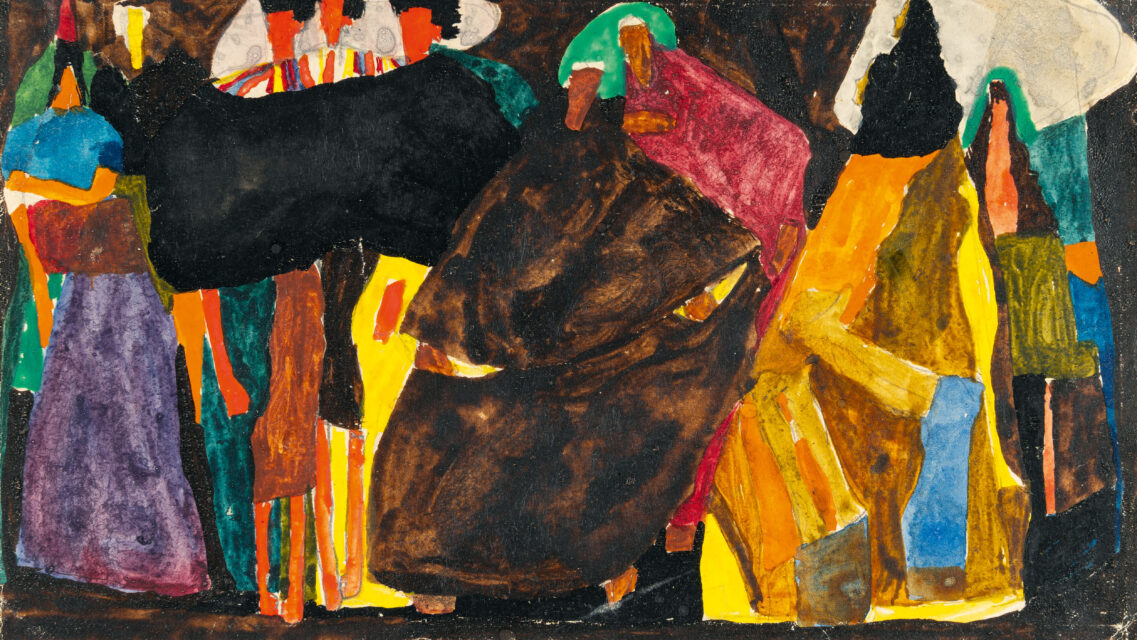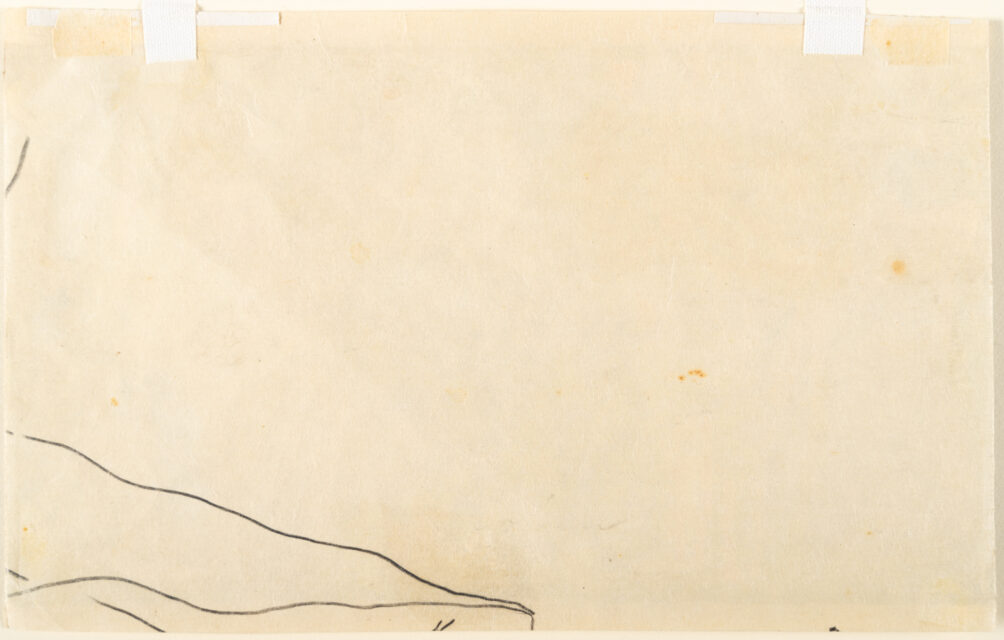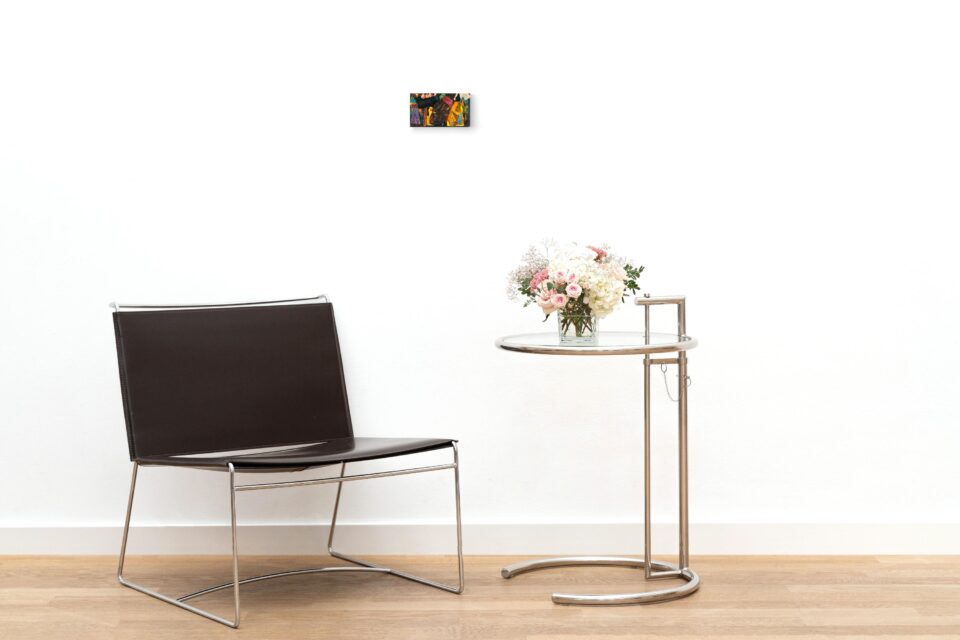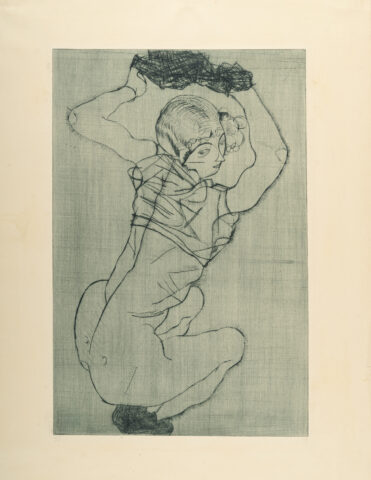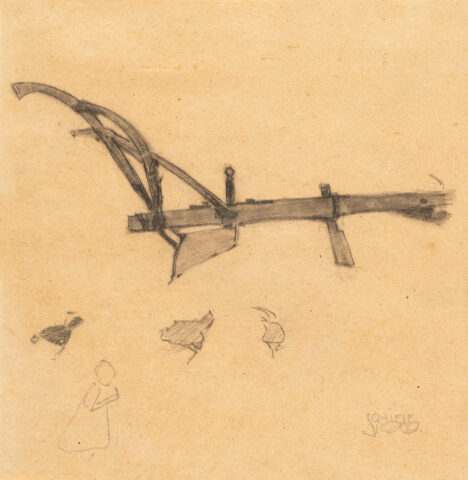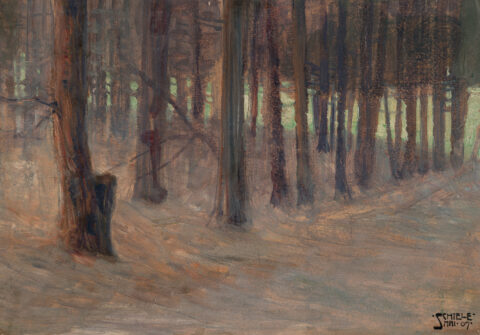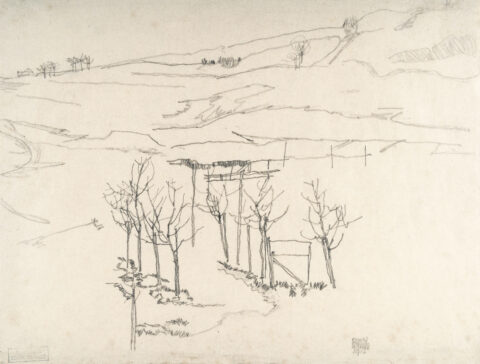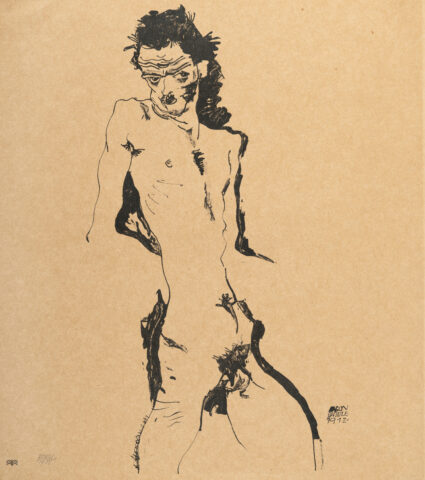
Study for an unexecuted picture
Details
Kallir D 981.
Exhibition:
Egon Schiele: Memorial Exhibition, Graphische Sammlung Albertina, Vienna 1948, cat. no. 109;
Egon Schiele: Vom Schüler zum Meister/Da allievo a maestro, Academy of Fine Arts, Vienna et al. 1984-1987, cat. no. 41;
Egon Schiele, Pinacoteca C., Rome/Museo d’Arte Moderna Ca’ Pesaro, Venice 1984, cat. no. 88;
Egon Schiele, Mezinárodní kulturní centrum Egona Schieleho, Krumau/Moldau 1993-1997, pp. 130/131;
New Gallery, New York 2010/11;
Drawing the Line: Realism and Abstraction in Expressionist Art, Galerie St. Etienne, New York 2018.
Provenance:
Otto Benesch Collection (1896-1964), Vienna/Cambridge (USA)/New York;
Serge Sabarsky Collection/Asset, New York, acquired in C. 1983;
Collection/Foundation Vally Sabarsky, New York.
Descrizione
– Characteristic multi-figure and two-dimensional composition from 1911
– The work is shown at the Schiele Memorial Exhibition at the Albertina in Vienna in 1948
– From the collection of Otto Benesch, curator and director of the Albertina, Vienna
In 1911, Egon Schiele worked with more complex themes and allegories than in previous years. As the new motifs now featured several figures, new compositional solutions were also required. Schiele removed the real world from the motifs, similar to his role model and patron Gustav Klimt. But unlike Klimt, who surrounded his realistically rendered figures with lavish, decorative frames, Schiele opted for a purely abstract space without any decorative structure in the expressionist sense. Instead, he breaks down the picture plane into geometric-abstract forms which, as with Klimt, are neither fully integrated into the figurative components nor completely separate. In Schiele’s work, they coexist uneasily.
In 1911, Schiele favoured watercolour painting in the majority of his works. He repeatedly used strong colour combinations of red-orange tones and black, and later in the year more muted combinations of blue, black and dark violet. Schiele uses pencil sketches to divide the sheet into different coloured areas, which are then filled in with paint. In this way, he develops purely two-dimensional motifs and refrains from creating a realistic volume. The surface structure is characterised by the flow of the wet, sometimes already watery paint on the paper rather than by brushstrokes.
The small watercolour study is exemplary for the year 1911, both in terms of composition and painting technique: the multi-figure composition against an abstract background features the characteristic orange/yellow and black colour scheme, while the structure of the wet watercolour is clearly visible in the pre-drawn areas. Even if this study did not directly serve as a model for a painting, compositional similarities to the paintings “Procession” and “Two Standing Figures in Habitual Clothing (Jesuits)” (Kallir P 197 and P 198) can be recognised.
* Tutte le informazioni includono la commissione a carico dell'acquirente (27%) senza IVA e senza garanzia. Salvo errori.
** Tutte le informazioni più la commissione a carico dell'acquirente e l'IVA e senza garanzia. Salvo errori.
*** Con riserva: L'offerta è stata accettata al di sotto del limite. L'acquisizione dell'opera potrebbe essere ancora possibile nella nostra vendita post-asta.
R = Le opere d'arte regolarmente tassate
N = Opere d'arte soggette a tassazione differenziata e provenienti da un paese non UE
Non è consentita la riproduzione e la distribuzione privata o commerciale di tutte le illustrazioni delle opere esposte nell'archivio della mostra e dell'asta. Tutti i diritti riservati.


